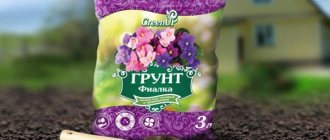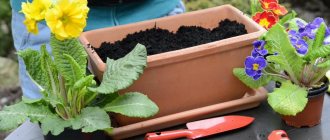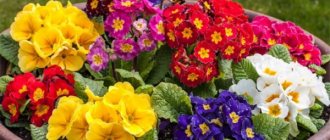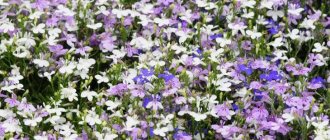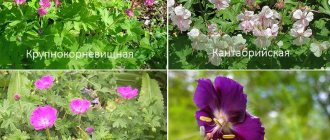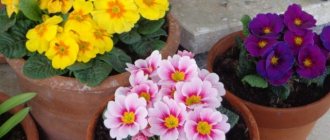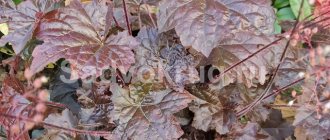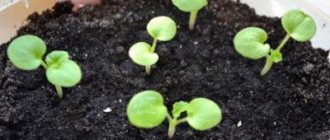Gaillardia is a plant of the Asteraceae family. The birthplace of this flower is America. It grows in the wild in Mexico and the southern United States. Named after Gaillard de Charenton, an eighteenth-century philanthropist who made major contributions to the development of botany.
This plant is the state symbol of Oklahoma. It grows in open areas and during the flowering period colors the fields in a bright fiery color.
Types and varieties of perennial and annual gaillardia: spinous and others
Both perennial and annual species and varieties of gaillardia are popular:
| Kinds | Description | Varieties | Description |
| Beautiful | Annual. An ornamental garden plant with one-color or two-color inflorescences - red at the base and yellow at the edges of the petals. | Red plume | Small flowers of rich red-pink color. |
| Lorenz | The inflorescences are large, with many petals. There are yellow and yellow-red varieties. | ||
| Pictha painted | Red or two-color inflorescences, large, spherical, with a large number of petals. | ||
| Yellow plume | Globular plants with yellow inflorescences, similar to the previous variety. | ||
| Blunt-toothed | Up to 70 centimeters high, with red-brown flowers. Rarely seen. | ||
| spinous | Perennial with dense straight stems, elongated or oval leaves. The flowers are reed-shaped, in rich warm shades. Flowering begins in early summer. | Mandarin | A variety of flower with bright red-orange inflorescences. |
| Wirral Flame | Red flowers with a thin yellowish border. | ||
| Dazzer | Two-color reed variety. | ||
| Hybrid | The result of mixing with other types of flowers. Depending on the variety, there are both tall (up to 80 cm) and short. | Primavera | Low, bushy plants with a large number of peduncles on one seedling. |
| Arizona Sun | Dwarf variety with a long flowering period. | ||
| Sonne | The height of the stem is up to 50-60 centimeters, there are inflorescences with tubular and reed petals. |
general information
Gaillardia is a bright representative of the Asteraceae with basket-shaped flowers characteristic of the entire family. The height of the bushes reaches 90 cm, but there are also dwarf varieties up to 25 cm. Gaillardia has thin straight stems, carved leaves and a branched structure.
Inflorescences in the form of baskets are composed of tubular and jagged flower-petals. They can be simple or double, but they all bloom long and profusely. Gaillardia is often confused with the similar helenium.
Photo: oir.mobi
Growing gaillardia from seeds, when to plant
Growing from seeds occurs in two ways: seedlings or sowing directly into the ground.
The first method is divided into two stages: preparing seedlings and planting seedlings in the ground.
Sowing seeds for seedlings
Planting is carried out at the end of February or beginning of March. The seeds are not buried, but laid out on the surface of the soil and left in a bright room at room temperature.
The container with seedlings is placed in a place protected from sunlight. Water with a small amount of water as needed.
Gaillardia produces its first sprouts one to two weeks after planting.
Seedling care
After germination of the seedlings, the container with the seedlings is moved to a colder part of the room or to a greenhouse. The sprouts are separated from each other and placed in small containers when the third leaf appears.
Water young plants as the substrate dries. The sprouts must be exposed to light for at least 14 hours a day - you will need to install lamps to create the necessary lighting. The humidity in the room with seedlings should be kept moderate.
Planting gaillardia in open ground
Planting gaillardia does not cause any great difficulties, but you must follow small recommendations regarding planting dates, location and soil.
Landing dates
Strong sprouts are planted in the ground at the end of summer or in September. If planted correctly, the seedlings will have time to take root before the onset of frost and produce eight to ten strong leaves. The plant will bloom next spring.
If you sow flowers directly into the ground, without first growing seedlings, then the right time for sowing is the end of spring. The seeds are planted in shallow holes in the beds, and when the sprouts grow stronger and produce a third leaf, they are transplanted into a flower bed.
Disembarkation rules
Light areas and dry soil are suitable for this plant. The flower does not take root well in soil oversaturated with moisture. Before planting seedlings, the soil is fertilized with a mineral mixture. The concentration of the substance should be low - no more than 40 grams per 1 liter of water. The soil is also fertilized with ash. The distance between seedlings should be at least 20 cm.
Features of gaillardia care
Caring for these plants is not difficult.
Care Tips
To get healthy inflorescences, follow a few simple rules:
- Mineral fertilizers are used to feed gaillardia.
- During the season, fertilize the soil three times: at the beginning of flowering, in mid-summer and after the plant has flowered.
- Regularly loosen and weed the flowerbed. Water with a small amount of water and only in hot and dry weather when the soil becomes dry.
- Tall varieties of perennials require a garter.
Top dressing
To feed plants, mineral complexes such as Kemira universal are used. Compost and humus can also be used as fertilizer.
The main rule is that fertilizers should not increase the acidity of the soil. The use of manure can lead to the development of diseases and death of the plant.
Description of the plant
Gaillardia awnata is the most common variety among perennials. Among its varieties, Dezzer, Wirral Flame, and Mandarin are especially popular. The latter species is distinguished by semi-double buds. The petals in them are arranged in several rows, and their color resembles the peel of a tangerine. Dezzer is distinguished by simple buds with a bright red core, which is surrounded by rich red tongue petals with a yellow border.
By crossing different varieties, hybrid gaillardia appeared. Gaillardia Arizona also belongs to this variety, but has a small stem height - up to 0.2 m. The plant blooms from the beginning of summer until frost. Read about long-flowering plants here.
Gaillardia Arizona San. Photo from pixabay.com
Among the varieties of the species, gaillardia Arizona Sun and gaillardia Arizona Red Shades are popular. Less common is gaillardia burgundy. Its peculiarity lies in its large buds, reminiscent of Burgundy wine in color. The height of the plant can reach 0.7 m.
Among the varieties of beautiful gaillardia, gaillardia Laurentian is popular. The plant also goes by other names: Gaillardia Laurenziana. The species is distinguished by dissected leaf blades, large double buds, the diameter of which can reach 7 cm. The flower petals have a burgundy, cream, red or yellow tint.
Gaillardia after flowering
Gaillardia blooms until the end of September. In October, seeds can be obtained from not removed peduncles.
How and when to collect gaillardia seeds
To collect seeds, flowers withered in summer are tied with tightly fixed gauze - this prevents unwanted seeds from falling into the soil. The inflorescences are left under gauze until the beginning of autumn, and then collected. A seed that falls naturally into the ground can also sprout in spring, so many gardeners do not resort to hand collection.
The seed method of propagating gaillardia is not popular. Plants grown using this method will differ from the mother plants and will not meet the standards of the variety. To preserve the appearance of the inflorescences, perennial varieties are planted using the bush method.
Similar in many ways to Helenium
Gaillardia is characterized by the presence of many corollas, thanks to which it perfectly decorates the flowerbed during flowering. Planting and caring for gaillardia in open ground largely depends on what kind of crop the grower prefers to cultivate - annual or perennial.
In the first case, it is necessary to create optimal conditions for beautiful gaillardia, and those who prefer perennials should learn the intricacies of cultivating hybrid and spinous gaillardia. However, one should not confuse gaillardia with helenium, which is quite reminiscent of it.
Reproduction of gaillardia
Perennial varieties are propagated by the bush method. A strong and healthy bush, growing in one place for five years, is dug up and divided into two or three parts. Each of the shoots must be strong, with durable leaves, capable of taking root in a new bed. Division is carried out at the end of the season, when the plant has completely flowered. All parts are planted in new flower beds.
The root method of propagation is also possible. The large roots of a healthy plant are cut into pieces 5 cm long and then planted in a greenhouse.
Joint planting with other plants
Perennial gaillardias combine very harmoniously in any flower arrangements in the garden with ordinary garden daisies, large-flowered nevus or asparagus. The culture is very loved by landscape designers and is actively used by them:
- when organizing flower beds and mixed flower beds;
- in border design;
- for creating ridges and alpine slides;
- in group plantings.
You can simply decorate a green area or lawns in the local area. For cutting and use in bouquets, it is best to grow tall varieties and hybrid forms.
Pests and diseases of gaillardia
The main cause of diseases is improper watering and excessively wet soil. The leaves of these flowers are susceptible to diseases such as:
- gray rot;
- rust;
- powdery mildew;
- spotty rashes.
Such diseases are caused by fungi. In the initial stages, the plant can be cured using fungicides (Fundazol, Skor). If the affected area is large, it is recommended to dig up and burn the diseased flower to prevent the fungus from spreading throughout the flowerbed. For preventative purposes, healthy flowers are treated with a solution of potassium permanganate.
The pests that most often cause damage to crops are aphids and whiteflies. Treating the flower bed with insecticides (Aktara, Aktellik) will help against them.
